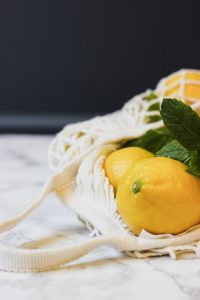These easy solutions to everyday kitchen frustrations have been hiding in plain sight. You’re welcome!
Pips no more
Picking pips out of your food after squeezing a lemon is such a drag. An easy way around this is to cover half a slice of lemon in muslin cloth, then squeeze out the juice. Hey presto, no more seeds. (Another method is to squeeze the lemon over a sieve.)
Pan lining made easy
Lining a deep baking tray, cake pan or casserole dish with baking paper can be tricky – the stuff usually just won’t stay in place, popping back out before you get to add whatever you’re going to bake or roast. Frustrating!
There’s a simple solution: simply turn the dish over and mould the baking paper over the outside of the dish or pan, making sure to fold firmly around the corners and the edges. Return the dish to its upright position and try to line it with the paper now – it should fit neatly into the vessel.
Bring eggs to room temperature
You’ve left whipping up a cake for your child’s school fete till the last minute… And you also forgot to take the eggs out of the fridge, but there’s no time to waste. Quickly bring them to room temperature by immersing them in very warm (but not hot) water for two minutes.
Room temperature eggs are usually called for in baking because they are easier to beat and blend to create a smooth batter, which will also rise more easily when baked.
Soften butter, pronto!
Just like with eggs, you may need to bake something in a hurry – and every baker knows the frustration of trying to cream butter and sugar when butter has just come out the fridge and is hard as rock.
To get around this (and avoid the Russian roulette game of trying to soften the butter in the microwave, which will most likely leave you with a puddle of melted liquid), you could grate the butter with a grater, ‘peel’ it with a vegetable peeler, or use a sieve to ‘shave’ the butter, all of which will bring the butter to room temperature much more quickly.
Prevent unsightly browning
If you’ve ever cut potatoes or apples and then wondered off to do something else – you’ll be familiar with the unappealing discoloration effect that occurs when these foods come into contact with the air, otherwise known as oxidation.
To help these foods keep their colour until you’re ready to cook or serve, submerge them in a bowl of cold water – and be sure to keep them submerged (apple slices might float) with either a weighted sieve or upturned lid. They should remain creamy and pale for a good few hours.
Image: Unsplash




